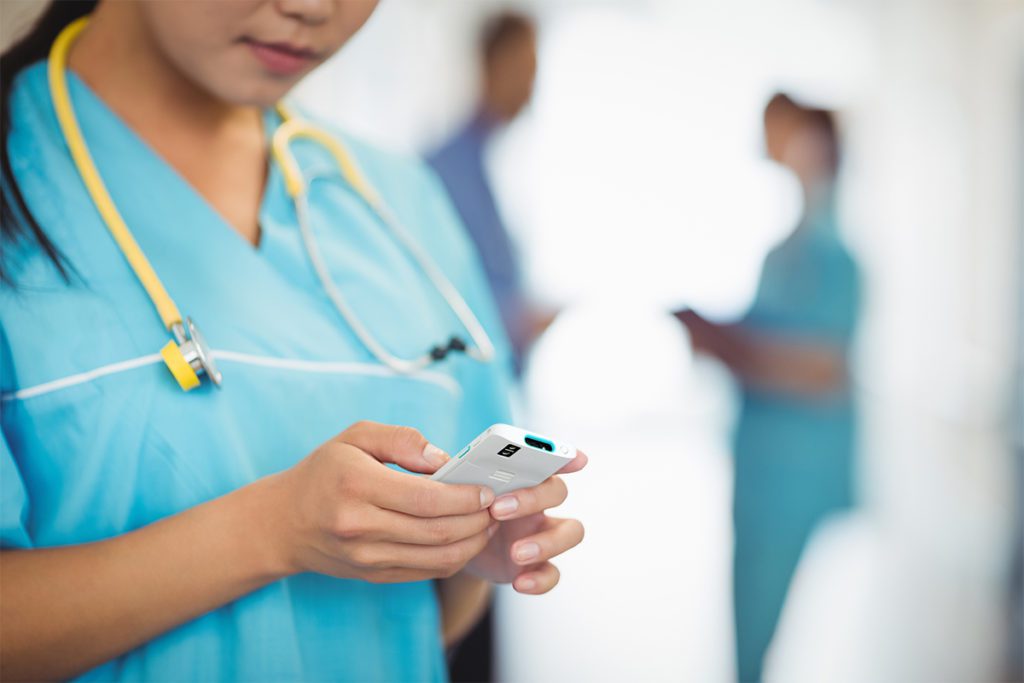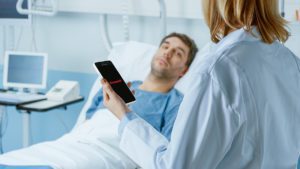In hospitals throughout the country, modern healthcare best practices and regulations have been impacting and modifying the clinical workflow. From clinical documentation to the addition of new medical devices, the healthcare industry is constantly changing. Because of these changes, nurses now spend more than 30% of their time performing non-patient care activities. In an effort to increase nurse efficiency, Honeywell has created a device to enhance workflow productivity and staff communication resulting in a connected clinician.
What is the Connected Clinician?
The connected clinician is the modern nurse who uses a clinical smartphone to stay connected and informed. A clinical smartphone allows nurses to stay connected in many ways:
- Connected to the care plan – doctors order
- Connected to the patient-nurse call
- Connected to alarms – mobile alarm management
- Connected to nursing tools – smartphone nursing apps
- Connected to assets – equipment locator
- Connected to support – IT access
- Connected to the care team – communication
- Connected to the patient’s status – medical device integration
- Connected to patient data – EMR data access
Since modern clinician needs to stay connected whenever and wherever they are in the hospital, it makes sense to give them one device to stay connected to everything and everyone. Clinical smartphones allow nurses to communicate with the care team via Voice over Internet Protocol (VoIP) phone calls, secure texting, email, and even video chat sessions. This makes it easy to find the correct caregiver associated with each patient and receive real-time status updates for each patient.
Connected clinicians will also be able to stay connected to patient data, care plans, and workflow statuses, allowing them to become more efficient. Referencing a patient’s care plan on a smartphone is revolutionizing the connected clinician’s life. No matter where the clinician is in the hospital, the data they need is only clicks away, which allows the clinician to move fast.
Revolutionizing Patient Care
 The connected clinician is revolutionizing acute care nursing. The connected clinician can complete tasks much faster than ever before, which results in greater patient satisfaction. The clinician can now stay connected to the needs of the patient and their family members during their hospital stay. And, the clinician can answer calls from the patient and their family which results in better communication and increased patient comfort.
The connected clinician is revolutionizing acute care nursing. The connected clinician can complete tasks much faster than ever before, which results in greater patient satisfaction. The clinician can now stay connected to the needs of the patient and their family members during their hospital stay. And, the clinician can answer calls from the patient and their family which results in better communication and increased patient comfort.
Personal Smartphone vs. Clinical Smartphone
In healthcare environments, it is important to use a clinical-grade smartphone rather than a personal phone. Clinical smartphones have several beneficial features that personal phones do not offer.
- It blends the features of a laptop, barcode scanner, and a consumer smartphone all in one rugged handheld.
- It is more rugged and can withstand drops and tumbles without the screen shattering.
- It is designed to withstand chemical disinfectants used in today’s hospitals.
- It has longer-lasting batteries to last more than a 12-hour shift.
- It has a built-in barcode scanner to rapidly capture patient wristbands, medications, specimen labels, and all other barcodes found in a nurse’s workflow.
Even with enhanced enterprise-grade features, the clinical smartphone, from a user’s perspective, operates the same as a personal smartphone.